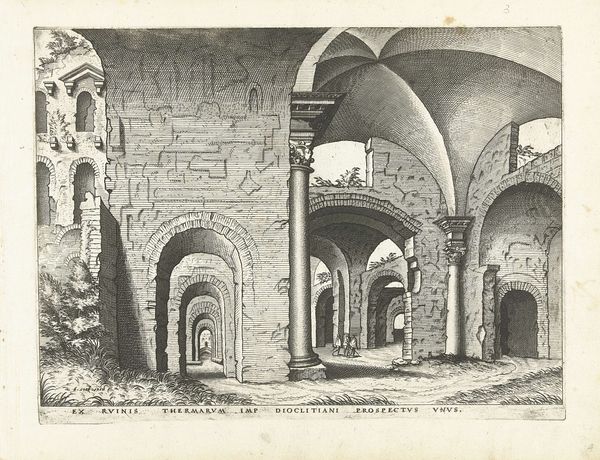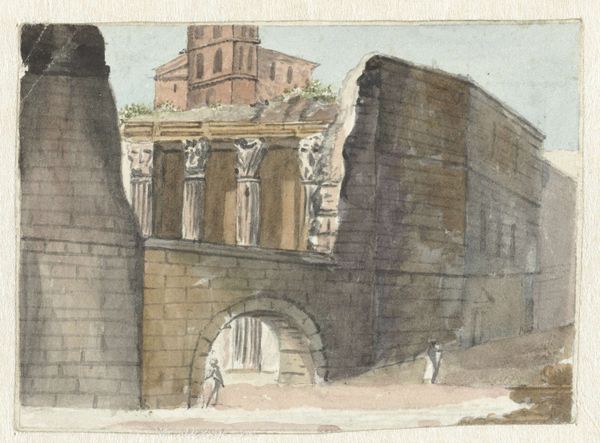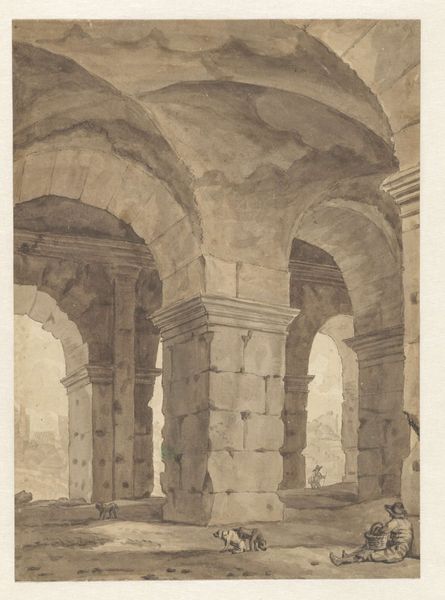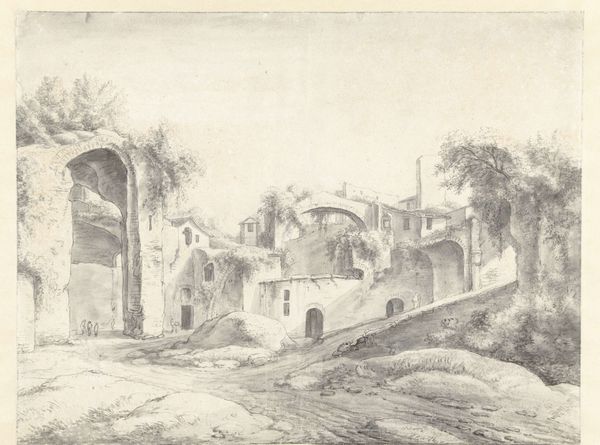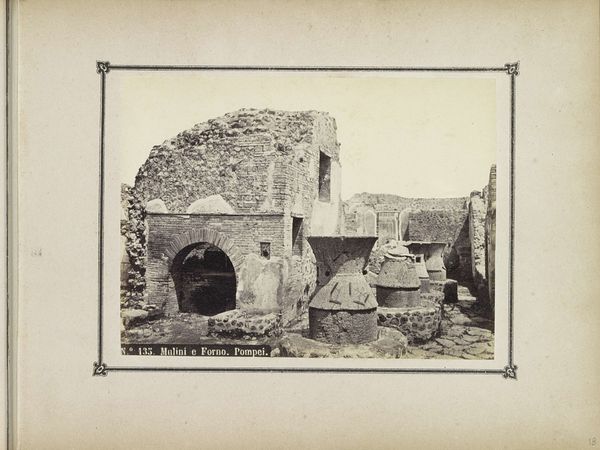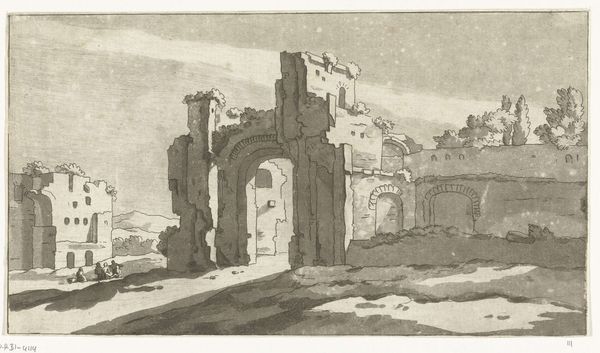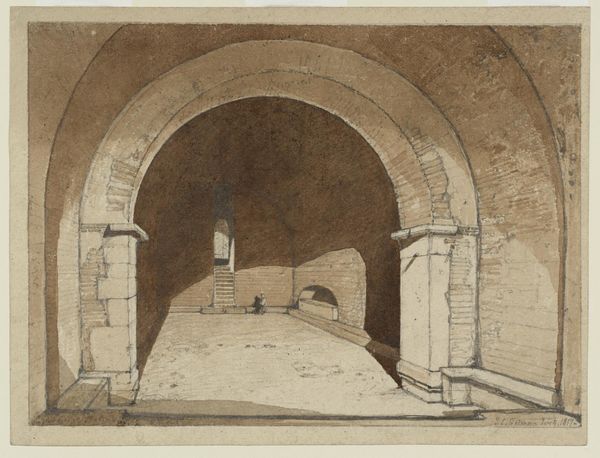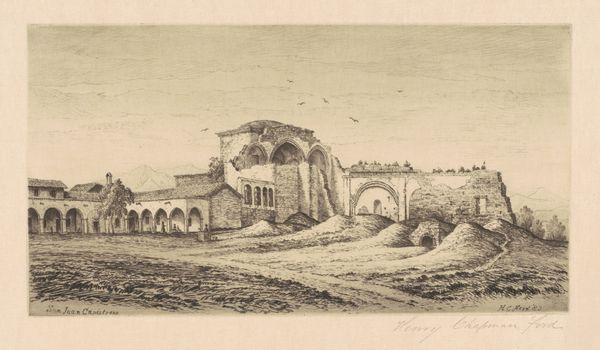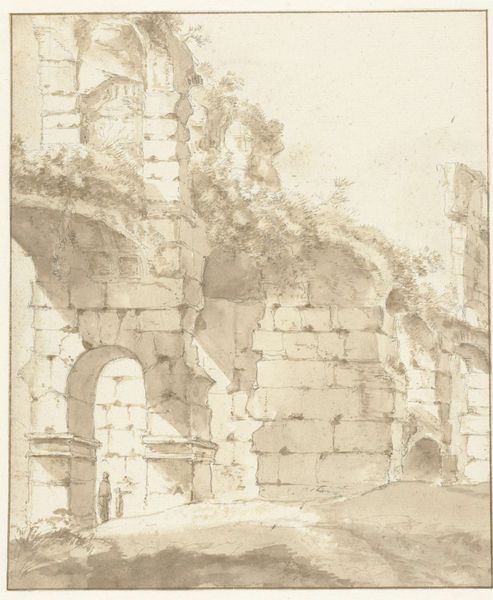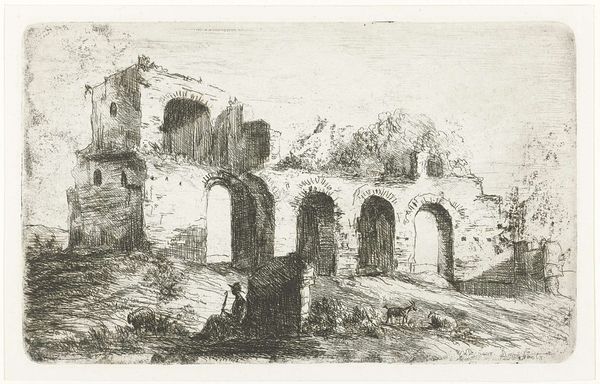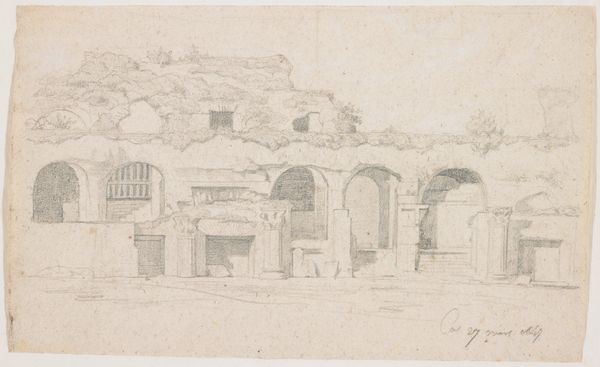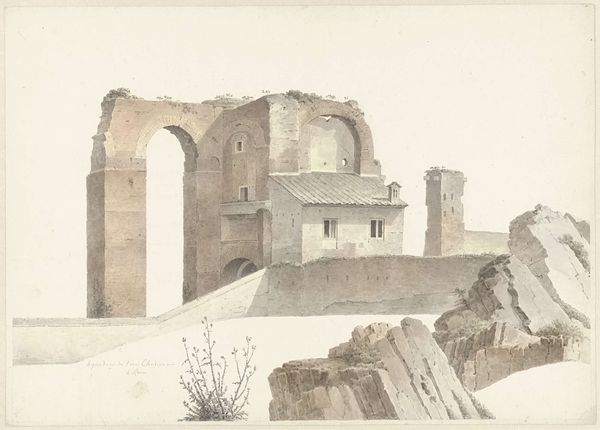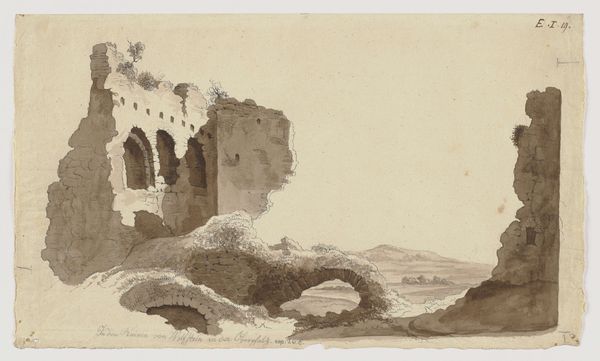
drawing, pencil, architecture
#
drawing
#
neoclacissism
#
pencil sketch
#
pencil
#
cityscape
#
history-painting
#
architecture
Dimensions: height 410 mm, width 697 mm
Copyright: Rijks Museum: Open Domain
Josephus Augustus Knip captured The Basilica of Maxentius and Constantine in Rome using watercolor and graphite, during a time when Europe was fascinated by antiquity. Knip’s vision presents a dialogue between the past and the present. The basilica, initially conceived as a symbol of imperial power by Maxentius and later completed by Constantine, speaks to the ambition and grandeur of the Roman Empire. Knip painted this artwork during a time when Europe was recovering from the Napoleonic wars. The ruins stand as a reminder of the cyclical nature of power and civilization. The cool tones of the watercolor evoke a sense of melancholy, mirroring the way the passage of time erodes even the most formidable structures. The ruins invite reflection on the nature of legacy, inviting us to ponder the contrast between human ambition and the inevitable decay that awaits all material endeavors.
Comments
rijksmuseum about 2 years ago
⋮
The gigantic, 4th-century AD building was used for judicial cases and by Romans settling private financial matters. In Knip’s time, it was known as Il Tempio della Pace (the Temple of Peace), the name he inscribed on the drawing. A view from the same vantage point is on display in the adjacent gallery; this is the only known case of two virtually identical views by Knip of the same motif.
Join the conversation
Join millions of artists and users on Artera today and experience the ultimate creative platform.
